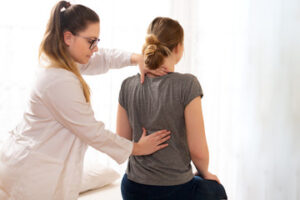Mini Storage facility offers colored garage-bay-looking units that vary in size and quality. They are usually located in rural or urban communities and rent to individuals.

Mini storage facilities serve many different customers. Whether you’re moving into a new home or simply need to make room, these spaces are great for personal use.
The sizes of Mini Storage units vary and there are many different choices for customers to consider. The size of your belongings and how much space you need will help determine which unit type is best for you. There are also a variety of contracts and periods to choose from. It’s important to look for a facility that offers flexible terms, as this will help you save money.
The smallest standard unit is the 5’x5’ unit, which is roughly the size of a closet and can accommodate items such as seasonal clothes, sporting equipment and a few boxes. This size is popular with college students looking to store their dorm room belongings over the summer, as well as individuals who need a small amount of extra storage space.
Medium storage units include the 10’x10’ and 10’x15’ options. These are the most common and can fit furniture from a one-bedroom apartment or office, along with a sofa, tables, chairs, appliances and boxes. They are also ideal for people who are moving or renovating their homes and need a temporary solution for their furniture and home décor.
Larger storage units include the 20’x20’ and 20’x30’ types. These are the largest units offered and can hold larger furniture pieces, bicycles, kayaks, and more. These are great for people who need a lot of space or want to store items that are too large to fit into their garages.
There are also a variety of specialty mini storage units that can accommodate specific needs. These may include units that are climate-controlled, have a lockable door, or are a secure vehicle storage area. In addition, there are a number of facilities that offer onsite repair services to help customers keep their units in good working order.
The name of the storage facility can play a role in the decision-making process for some customers. Some facilities use the term “mini” in their name to distinguish themselves from other storage businesses, which do not necessarily offer mini storage. For instance, some facilities that do not allow RVs and boats use the term self storage in their names because these customers are not the same as those who rent mini storage units.
Security
Storage units are a valuable resource for people who don’t have the space to store their belongings at home. Many of these facilities offer a variety of security measures to protect customers’ items from theft and vandalism. These include CCTV, door alarms, and secure gates. Some even have climate control to keep delicate items like photographs and wooden antiques safe for long periods of time. Make sure to ask about these features before renting a unit.
Mini storage is a term that refers to a building in which individual and private storage spaces are leased on a short-term basis, often month-to-month. These spaces are usually in rooms, lockers, containers or outdoor parking areas. Some buildings are also insulated to protect items from extreme heat and cold.
One of the most important things to consider when designing a mini-storage facility is the needs of the local community. For example, a facility in a recreational area would need to be large enough to accommodate boats, trailers and RVs. It could also require higher sidewalls to support larger units. Similarly, a facility near an industrial park might need to be more rugged to accommodate machinery and tools.
Moreover, it’s essential to ensure that all of the security features at a storage facility are working together. For instance, a smart security system can log all of the vehicles and personnel entering and leaving the site and can send alerts to relevant security staff in real-time. This helps in identifying any potential issues before they escalate into full-scale incidents.
Other security measures for storage facilities include a fully fenced-in property, CCTV, motion sensors, and an onsite manager. These features not only deter criminal activity but also improve emergency response capabilities. Moreover, they help to build customer trust and loyalty. Some storage facilities use CCTV to monitor their sites 24/7, and they also have on-call guards to respond to any incidents as soon as they occur. This combination of active security systems and physical barriers provides a strong defense against crime and boosts customer confidence in storage facilities.
Cleanliness
Storage units are great for freeing up space in your home, but they can also be a source of dust and other problems. To avoid this, it’s important to keep your belongings clean. The first step in cleaning your storage unit is to sweep or vacuum the floor, then wipe down surfaces and shelves. This will prevent dust from building up on your items, and it will help you stay organized.
Taking an inventory of what you have in storage is another important step. This will allow you to keep track of what you have and plan accordingly. You can also use this opportunity to purge unnecessary items or donate them to charities. Finally, reorganizing your storage unit will create a cleaner layout and make it easier to find things.
Before placing any items in storage, it is a good idea to give them a good cleaning. This will help keep the items free of dust, and it will also make it easier to find them when you need them. You can use a water-vinegar solution or a cleaning spray to clean your items. Then, you can seal them in plastic containers to ensure that they stay clean and dry.
Regular cleaning of your storage unit will also help prevent mold, mildew, and pests. This is especially important for delicate items or valuables, such as artwork or antiques. If you are storing these types of items, you should consider using a climate-controlled storage unit. This will protect your belongings from temperature fluctuations and humidity, which can cause damage.
The cleanliness of a storage unit is a major selling point for facilities. Customers should inquire about cleaning schedules, whether the staff is professional, and if hygienic features such as sanitizers are available. Clean storage units can transform your space and increase your return on investment.
Transportation
If you’re looking for a Mini Storage Unit, you should make sure to choose one with an efficient transportation system. The facility should have elevators and handcarts that facilitate movement of items. Also, the units should have ample space to prevent jams. Also, you should look for a facility that offers flexible contracts. Finally, it’s important to consider the cost of a storage unit. Most good facilities offer reasonable prices and a convenient rental term.
Many people are hesitant to sell or get rid of their personal possessions, and mini storage is the perfect solution for them. These storage units can accommodate everything from a few boxes to an entire furniture set. In addition, they can serve as a temporary solution while you move into a new home. If you’re a business owner, mini storage can also help you manage your inventory.
The term “mini storage” may seem confusing, but it’s actually just another name for self storage. Most storage facilities use the term to distinguish themselves from others, but there are some subtle differences between them. For example, some older facilities still use the term mini storage, while others have replaced the word with “self storage.”
Another way that mini-storage differs from self-storage is that it’s typically aimed at individuals, rather than companies. While there’s no specific definition of “mini storage,” it generally refers to spaces ranging from 5 to 20 feet in size, which are comparable to the space of a two-car garage.
Besides offering storage units, some mini-storage facilities also rent parking spaces to store cars, boats, and trailers. These spaces are an excellent alternative to storing your vehicles on the street or in your driveway, where they’re vulnerable to vandalism and theft.
Other customers who use mini storage include movers and contractors, who need to store equipment that they won’t be using for a while. Moreover, business owners use it to store excess inventory before it can be shipped out to retailers or other clients. Additionally, mini-storage is a great alternative to a warehouse, since it’s more affordable and secure.








